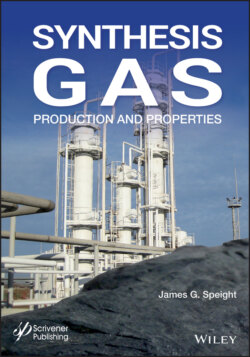Читать книгу Synthesis Gas - James Speight G., James G. Speight - Страница 13
1.2 Typical Energy Sources
ОглавлениеThe widespread use of fossil fuels has been one of the most important stimuli of economic growth and has allowed the consumption of energy at a greater rate than it is being replaced and presents an unprecedented risk management problem (Yergin, 1991; Hirsch, 2005; Hirsch et al., 2005; Yergin, 2011). A peak in the production of crude oil will happen, but whether it will occur slowly or abruptly is not certain – given appropriate warnings, the latter is likely to be the case. The adoption of alternate technologies to supplant the deficit in oil production will require a substantial time period on the order of at least 10 to 20 years.
Global energy consumption is increasing and is expected to rise by 41% over the period to 2035 – compared to a 52% rise over the last 20 years and 30% rise over the last decade. Of the growth in demand, 95% is expected to come from the emerging economies, while energy use in the advanced economies of North America, Europe and Asia as a group is expected to grow only very slowly – and begin to decline in the later years of the forecast period (BP, 2019). The data for reserve estimates indicate that there are sufficient reserves to cover this trend at least to and even beyond 2035. Crude oil and its associate remain the leading fuel and source of chemicals (Speight, 2014a, 2019a).
For many decades, coal has been the primary feedstock for gasification units but due to recent concerns about the use of fossil fuels and the resulting environmental pollutants, irrespective of the various gas cleaning processes and gasification plant environmental cleanup efforts, there is a move to feedstocks other than coal for gasification processes (Speight, 2013a, 2013b, 2014b). But more pertinent to the present text, the gasification process can also use carbonaceous feedstocks which would otherwise have been discarded and unused, such as waste biomass and other similar biodegradable wastes. Various feedstocks such as biomass, crude oil resids, and other carbonaceous wastes can be used to their fullest potential. In fact, the refining industry has seen fit to use crude oil resid gasification as a source of hydrogen for the past several decades (Speight, 2014a).
Gasification processes can accept a variety of feedstocks but the reactor must be selected on the basis of feedstock properties and behavior in the process. The advantage of the gasification process when a carbonaceous feedstock (a feedstock containing carbon) or hydrocarbonaceous feedstock (a feedstock containing carbon and hydrogen) is employed is that the product of focus – synthesis gas – is potentially more useful as an energy source and results in an overall cleaner process. The production of synthesis gas is a more efficient production of an energy source than, say, the direct combustion of the original feedstock because synthesis gas can be (i) combusted at higher temperatures, (ii) used in fuel cells, (iii) used to produce methanol, (iv) used as a source of hydrogen, and (v) particularly because the synthesis gas can be converted via the Fischer-Tropsch process into a range of synthesis liquid fuels suitable for use gasoline engines, for diesel engines, or for wax production.
Therefore, a brief comment about each of the potential energy sources is presented below.
